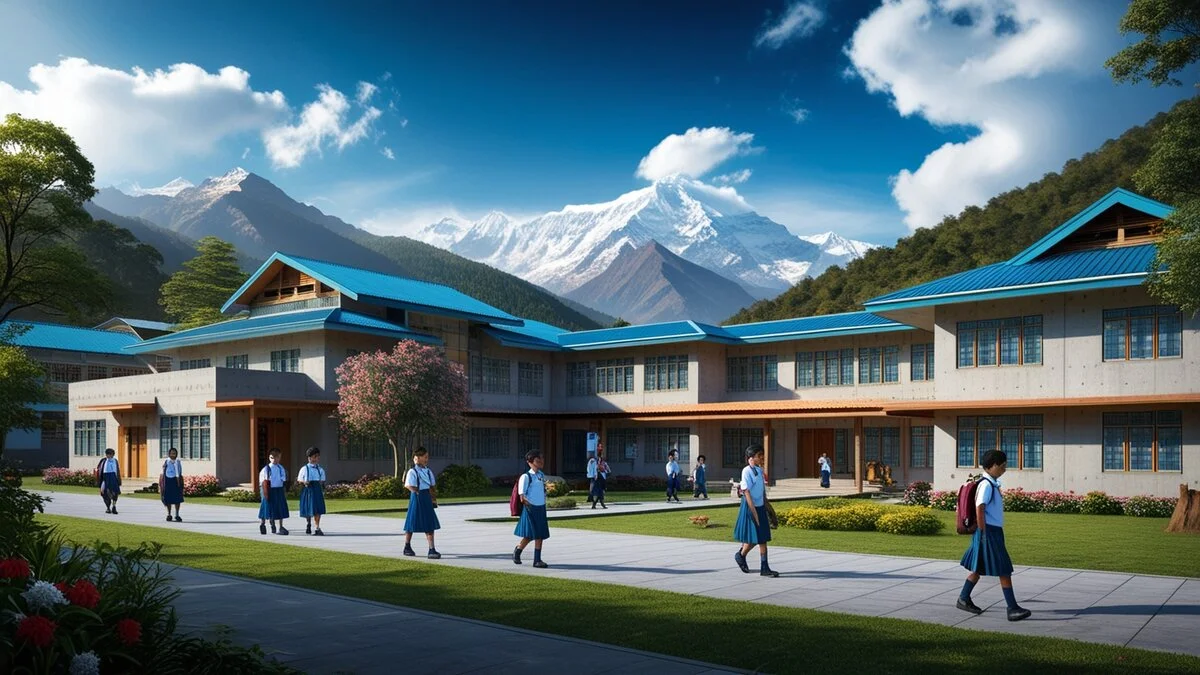Introduction: A Village School’s Last Bell
In the remote village of Lingmoo in West Sikkim, 10-year-old Pema used to walk just five minutes to reach her small government primary school. But in 2025, her school was one of 97 shut down by the Sikkim government due to low enrollment. Now, she treks two hours to the nearest open school, crossing rocky paths and streams. “I miss my old school,” she says. “Sometimes, when it rains, I can’t go at all.”
Pema’s story is not unique. On November 14, 2024, Sikkim’s Education Minister Raju Basnet announced the closure of 97 government schools—78 primary, 12 junior high, and seven senior secondary—citing an average enrollment of just 30 students per school, far below the state average of 108. The government claims this move will improve education quality by consolidating resources. But critics warn it will leave rural students like Pema behind.
Why Are Schools Closing? Efficiency vs. Reality
The Sikkim government argues that merging under-enrolled schools will allow better teachers, funds, and infrastructure use. According to official data, the state has 1,259 schools, 864 government-run, educating 62% of Sikkim’s students. Closing 97 of these will save costs—90% of government school spending currently goes toward salaries.
However, opposition leaders like BJP’s DR Thapa call the decision “shortsighted.” “Closing schools doesn’t fix teacher shortages or crumbling buildings,” he says. “It just makes education harder for the poorest families.”
Research from other regions shows mixed results. In China, rural school consolidation improved test scores in some areas but increased dropout rates in others, especially where transportation was unreliable. In Sikkim, many villages lack buses or safe roads. The government promises “transport or hostel facilities,” but details remain unclear.
The Human Impact: Longer Walks, Fewer Choices
The closures affect roughly 3,000 students. In villages like Lingmoo, where the only primary school shut down, parents now face tough choices: let children risk long, unsafe walks or pull them out of school entirely.
“My son is only six. I can’t let him walk alone for hours,” says farmer Dorjee Tamang. “Private schools are too expensive. What option do we have?”
Teachers also worry. “Small schools mean more individual attention,” says a former teacher from one of the closed schools, who asked not to be named. “Now, students will be crammed into bigger classrooms where they might get lost.”
Tribal communities, which rely heavily on government schools, are especially vulnerable. Activists warn that without local schools, indigenous languages and cultures could fade as children assimilate into larger, more urban institutions.
More Significant Problems: Will Dropouts Rise?
India’s National Education Policy (NEP) 2020 emphasizes keeping schools close to children to prevent dropouts. Yet Sikkim’s closures risk pushing rural students out of the system. Data from other Indian states show that when schools shut, enrollment often drops—especially among girls, whose parents are more likely to keep them home if travel seems unsafe.
Sikkim’s literacy rate is slightly below the national average (82% vs. 84%). If more children leave school early, the gap could widen.
Were There Better Solutions?
Critics argue that instead of closures, the government could have:
- Invested in multi-grade teaching, where one teacher handles multiple classes (successful in Himalayan states like Himachal Pradesh).
- Upgraded digital infrastructure, allowing small schools to share resources via online classes.
- Partnered with NGOs to improve teacher training and facilities.
Kerala, for example, kept rural schools open by turning them into community hubs with libraries and adult education programs.
What’s Next? A Call to Action
The closures are set to take effect after the 2025 academic year. Parents, activists, and opposition leaders are demanding:
- Transparency: Clear criteria for which schools close and how students will be supported.
- Guaranteed transport: Free buses or hostels for displaced students.
- Rural education funding: Redirect saved money to improve remaining schools.
For now, students like Pema keep walking. “I want to be a teacher,” she says. “But I’m always tired now.”
Conclusion: A Dangerous Trade-Off
Closing schools may save money, but at what cost? Sikkim’s decision highlights a nationwide struggle: balancing efficiency with equity. Without careful solutions, rural students could pay the price for generations.










